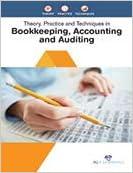
Nuclear spins. Consider a crystalline solid whose nuclei have spin 1. From quantum mechanics, we know that each nucleus can be in one of three quantum states labeled by quantum number m=1,0, or 1 (this corresponds to the nuclear spin projection onto the crystal axis of the solid). Due to the ellipsoidal charge distribution of the nucleus, the nuclear energy is E=0 for m=0, and E= for m=1. Assume the nuclei do not interact with each other. a. First consider a single nuclear spin. i. Find the ratio of the probability of the particle being in (any of its) first excited states to the probability of its being in the ground state. ii. What is the partition function of a single nuclear spin? b. What is the partition function for a mole (Avogadro's number, NA6.021023 ) of nuclei? c. Write down an expression for the average nuclear energy of one mole of the solid Emole as a function of temperature . d. Write down an expression for the entropy of one mole mole of nuclear spins as a function of temperature . e. What are the low- and high-temperature limits of the molar entropy from part d.? Explain your answer based on physical intuition. f. Calculate the nuclear contribution to the molar heat capacity of the solid as a function of . Sketch a qualitative graph of its behavior, and label the functional form of the temperature dependence in the low- and high-temperature limits. Nuclear spins. Consider a crystalline solid whose nuclei have spin 1. From quantum mechanics, we know that each nucleus can be in one of three quantum states labeled by quantum number m=1,0, or 1 (this corresponds to the nuclear spin projection onto the crystal axis of the solid). Due to the ellipsoidal charge distribution of the nucleus, the nuclear energy is E=0 for m=0, and E= for m=1. Assume the nuclei do not interact with each other. a. First consider a single nuclear spin. i. Find the ratio of the probability of the particle being in (any of its) first excited states to the probability of its being in the ground state. ii. What is the partition function of a single nuclear spin? b. What is the partition function for a mole (Avogadro's number, NA6.021023 ) of nuclei? c. Write down an expression for the average nuclear energy of one mole of the solid Emole as a function of temperature . d. Write down an expression for the entropy of one mole mole of nuclear spins as a function of temperature . e. What are the low- and high-temperature limits of the molar entropy from part d.? Explain your answer based on physical intuition. f. Calculate the nuclear contribution to the molar heat capacity of the solid as a function of . Sketch a qualitative graph of its behavior, and label the functional form of the temperature dependence in the low- and high-temperature limits







